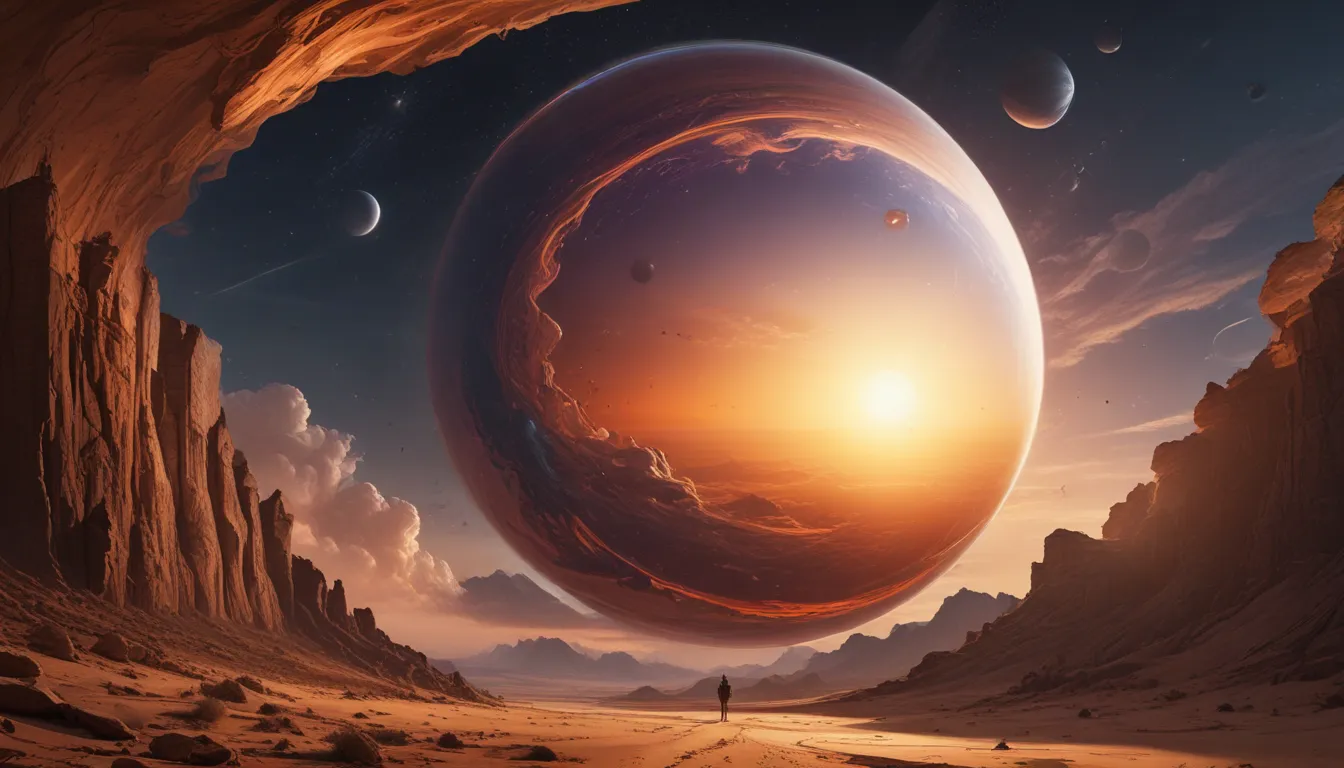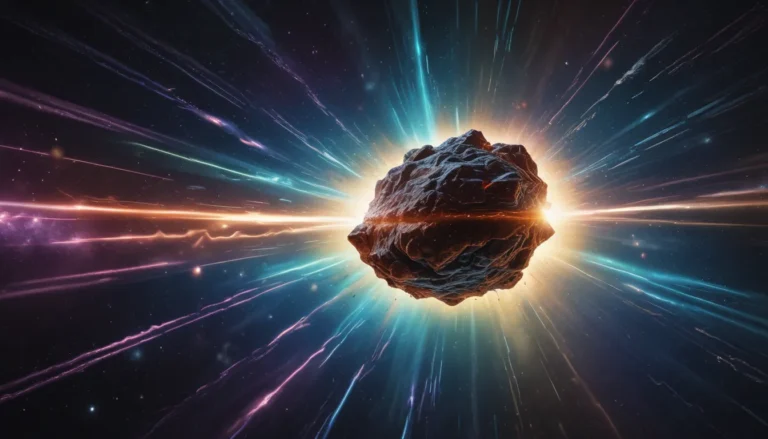The pictures we use in our articles might not show exactly what the words say. We choose these pictures to make you interested in reading more. The pictures work together with the words but don’t take their place. The words still tell you the important facts.
Have you ever gazed up at the night sky and wondered about the vast expanse of space beyond our solar system? The answer lies in the enigmatic heliosphere, a protective bubble that shields us from cosmic rays and interstellar winds. In this article, we will embark on a journey of discovery as we unravel 18 surprising and little-known facts about the heliosphere, shedding light on its composition, dynamics, and significance in our cosmic neighborhood. Get ready to be amazed and inspired as we delve into the mysteries of the heliosphere and uncover its fascinating secrets.
Key Takeaways:
- The Heliosphere is like a protective bubble around our solar system, shielding us from cosmic rays and galactic radiation. It's shaped by the Sun's activity and constantly changes over time.
- Voyager 1 and Voyager 2 have crossed the Heliosphere, giving us valuable data about the region beyond our solar system. Despite its protective nature, the Heliosphere still allows some cosmic rays to reach us.
The Heliosphere: A Guardian of the Solar System
At the core of our cosmic neighborhood lies the Heliosphere, a massive protective bubble that extends far beyond the planets, enveloping the entire solar system. This fascinating structure acts as a shield, safeguarding us from cosmic rays and galactic cosmic radiation, preserving the delicate balance of our celestial home.
Unveiling the Solar Wind: Creator of the Heliosphere
The Heliosphere owes its existence to the solar wind, a steady stream of charged particles, mainly electrons and protons, emitted by our radiant Sun. As these particles journey outward, they engage with the interstellar medium, shaping the boundary of the Heliosphere and defining its protective perimeter.
Voyager Probes: Pioneers of Interstellar Space
In a historic moment, Voyager 1 and Voyager 2 ventured beyond the confines of the Heliosphere, venturing into the uncharted territory of interstellar space. These intrepid probes have provided invaluable insights into the mysteries of the region beyond our solar system, expanding our understanding of the cosmic landscape.
The Sun’s Influence: Shaping the Heliosphere
The dynamic nature of the Sun plays a pivotal role in defining the shape of the Heliosphere. During periods of heightened solar activity, the Heliosphere expands, extending deeper into interstellar space. Conversely, during phases of solar quiescence, such as solar minimum, the Heliosphere contracts, adapting to the Sun's varying moods.
Cosmic Shield: Protection Against Extragalactic Cosmic Rays
As guardians of the solar system, the Heliosphere intercepts extragalactic cosmic rays, high-energy particles originating from beyond our galaxy. By deflecting and repelling these cosmic intruders, the Heliosphere safeguards the inner realms of our cosmic abode from their potent impact.
Astounding Asymmetry: The Unique Shape of the Heliosphere
Intriguingly, the Heliosphere is not a symmetrical structure but rather displays an asymmetric profile. Shaped by the interplay of the interstellar medium and the Sun's motion through space, the Heliosphere appears elongated and compressed in specific directions, enhancing its enigmatic allure.
Ever-changing Dynamics: The Dynamic Nature of the Heliosphere
Embarking on a cosmic dance with the Sun, the Heliosphere undergoes constant metamorphosis, mirroring the solar activity cycle. These fluctuations influence the size, shape, and strength of the Heliosphere, emphasizing its dynamic and evolving character.
Earth’s Lifeguard: The Vital Role of the Heliosphere
By deflecting a significant portion of galactic cosmic rays, the Heliosphere serves as a formidable protector of Earth's atmosphere, preserving the delicate equilibrium of our planet. This vital shield sustains the stability of our atmosphere and shields us from the perils of cosmic radiation.
Magnetic Mysteries: The Solar Magnetic Field within the Heliosphere
Encompassing the Heliosphere is the intricate web of the solar magnetic field, shaping its boundaries and intertwining with the interstellar magnetic fields. This magnetic tapestry guides and influences the cosmic currents that traverse the Heliosphere, defining its magnetic signature.
Bow Shock: A Cosmic Ripple in the Heliosphere
At the frontier of the Heliosphere lies the termination shock, where the solar wind encounters the resistive force of the interstellar medium, slowing down abruptly. This transitional zone marks the boundary between the Heliosphere and the outer realm known as the heliosheath.
Cosmic Illumination: The Glowing Heliosphere
In a mesmerizing display, the Heliosphere emanates a faint glow in ultraviolet light as the solar wind interacts with hydrogen atoms in the interstellar medium. Known as the "Lyman-alpha glow," this ethereal radiance can be observed and studied using ultraviolet telescopes, illuminating the cosmic tapestry.
Galactic Influence: The Interplay of the Heliosphere and the Galactic Magnetic Field
The Heliosphere is not an isolated entity but intricately connected to the broader cosmic stage, influenced by the galactic magnetic field. This cosmic conductor orchestrates the structure and behavior of the Heliosphere, its impact shifting and swaying in response to the galaxy's magnetic symphony.
Dynamic Barrier: The Permeability of the Heliosphere
Though a formidable guardian, the Heliosphere is not impregnable, permitting energetic particles such as cosmic rays from supernova explosions to breach its defenses and permeate the inner sanctum of our solar system. This dynamic interplay underscores the Heliosphere's evolving nature.
Territorial Solitude: The Heliosphere’s Unique Identity
While akin structures may exist in other planetary systems, the Heliosphere stands as a distinctive phenomena within our cosmic vicinity, a testament to the singular identity of our solar system. As we chart the cosmic seas, the Heliosphere remains a beacon of protection and wonder in the cosmic expanse.
Harmonious Collision: The Bow Shock in the Heliosphere
As the solar wind collides with the interstellar medium, a cosmic ripple known as the bow shock emerges, akin to the ripple formed by a vessel traversing water. This celestial cushion slows the ingress of interstellar material into the Heliosphere, sculpting a harmonious collision in the cosmic tapestry.
Cosmic Emissaries: The Influx of Cosmic Rays in the Heliosphere
Despite its vigilant guard, the Heliosphere allows a fraction of high-energy cosmic rays to permeate the solar system, adding a cosmic accent to our celestial abode. This influx of cosmic emissaries reminds us of the dynamic interplay between the cosmos and our terrestrial realm.
Boundless Horizon: The Heliopause as the Gateway Beyond
At the outer limit of the Heliosphere lies the heliopause, where the solar wind merges with the interstellar medium, yielding a turbulent region of interaction. This cosmic threshold marks the doorway to the vast expanse of interstellar space, beckoning us to explore the uncharted realms beyond.
Conclusion
The Heliosphere emerges as a celestial marvel, weaving a tapestry of protection and mystery around our solar system. Through its intricate dance with the cosmos, the Heliosphere serves as a guardian of Earth, shielding us from the cosmic tempest beyond. As we unravel the secrets of this cosmic sentinel, we deepen our understanding of our universe and our place within its grand tapestry.
FAQs
- What is the heliosphere?
The heliosphere is a vast expanse of space surrounding our Sun, extending far beyond the realm of the planets and encompassing the solar system. It acts as a protective shield, safeguarding us from cosmic rays and galactic radiation.
- How large is the heliosphere?
Spanning a distance of approximately 120 astronomical units (AU), the heliosphere extends far beyond the furthest reaches of our planetary system. One AU corresponds to the average distance between the Earth and the Sun, approximately 93 million miles or 150 million kilometers.
- What shapes the heliosphere?
The heliosphere's shape is primarily influenced by the solar wind, a stream of charged particles emanating from the Sun. The interaction between the solar wind and the interstellar medium creates a boundary region that defines the shape and extent of the heliosphere.
- How does the heliosphere protect us?
Functioning as a cosmic shield, the heliosphere deflects and slows down incoming cosmic rays from interstellar space, safeguarding our solar system from their potent effects. This protective barrier plays a vital role in maintaining a habitable environment for life on Earth.
- Are there similar structures in other star systems?
While the heliosphere is unique to our solar system, other star systems may possess analogous structures known as astrospheres. These astrospheres are formed by the stellar wind of their respective stars and interact with the surrounding interstellar medium, shaping their cosmic realm.
Unveiling the Cosmic Tapestry
Journeying through the cosmic expanse, we unravel the mysteries of the Heliosphere, a celestial protector that shields us from the cosmic tempest. From its dynamic shape to its interaction with the galactic landscape, the Heliosphere unveils a world of wonder and awe, inviting us to explore the boundless horizons of our universe. As we delve deeper into the cosmic intrigues of the Heliosphere, we embark on a voyage of discovery that unveils the intricate tapestry of our cosmic neighborhood. Join us as we peer into the cosmic abyss and unlock the secrets of the Heliosphere, a celestial wonder that continues to captivate and inspire us.






